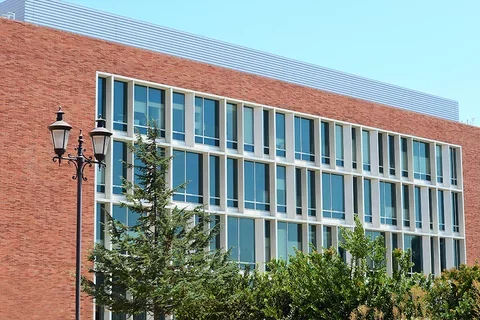Joining the Military After Med School
One Student's Story

Career Development: Some Take a Different Path to Treat Others
While many students plan to enter private practice after completing their medical education, some take a different path to treat others. Fourth-year student Alana Waiwaiole will enter the military after medical school, and she recently accepted a commission as a second lieutenant in the United States Air Force.
The Decision to Serve
Waiwaiole's family isn't new to military service. Both of her brothers attended the Air Force Academy, as did her husband. On top of its familiarity, their service and dedication made Waiwaiole realize that she wanted to follow suit. "Seeing the people that I love in the military, and knowing I would have the unique opportunity to practice medicine in a different way, really attracted me to the Air Force," she says.
Entering the Air Force
In order to receive a commission in the Air Force, and to be eligible for the Air Force Health Professions Scholarship Program (HPSP) scholarship, Waiwaiole had to already have been accepted into medical school. She contacted a recruiter to begin the process and, after receiving her acceptance letter from the David Geffen School of Medicine at UCLA, submitted her MCAT and undergraduate GPA. And because both her MCAT and GPA met certain criteria, she wasn't required to go through an interview process. A physical examination followed, and Waiwaiole was officially part of the United States Air Force.
Benefits of the Scholarship
Alana Waiwaiole is a medical student at the David Geffen School of Medicine at UCLA who will enter Air Force service after she completes her medical training.
The Air Force Health Professions scholarship pays for a student's tuition, books and related fees and provides a monthly stipend. It can be a strong financial benefit to cover the educational cost.
"When I signed up, I received a bonus, which helped me find an apartment," Waiwaiole explains. "In addition to the tuition, it pays for equipment, like my stethoscope, and board exams — step[s] 1 and 2, which cost about a thousand dollars. I also receive active-duty benefits, military discounts and health and dental insurance."
Serving While Attending School
Waiwaiole currently is a reservist in the Air Force; she serves 45 days of active duty each year. These periods of active duty can take different forms, depending on the nature of her Air Force training and medical experience. After her first year of medical school, she attended a comprehensive six-week Commissioned Officer's Training course. Her active-duty periods also were designated "campus tours," where she continued to attend school.
Finally, she underwent an active-duty rotation at the Brooke Army Medical Center in San Antonio, Texas.
(Want to learn more about how the military promotes higher education, including medicine? Read our Medicine and the Military article...)
Full-Time Military Service
After completing a four-year residency in anesthesia — Waiwaiole's chosen specialty — she will be assigned to active duty, where she'll be able to rank her preferred duty stations. Ultimately, however, her assignment will hinge on the needs of the Air Force. As an anesthesiologist, she can choose between teaching and training students, either at a large hospital amid clinical work or a smaller hospital in a clinical-based role. Additionally, anesthesiologists run the critical care air transport, which delivers wounded service members from the front lines to military hospitals.
"For me, I would love to do critical care transport; it's such a unique variant in the military. But otherwise, I'd like to go to the Air Force hospital in San Antonio. It's a training base where I can have a teaching and clinical role as well."
Waiwaiole looks forward to a rewarding career in the Air Force. For students considering entering the military after medical school, the armed forces provide a host of exclusive benefits for medical students who wish to serve their country — financially, professionally and personally.



